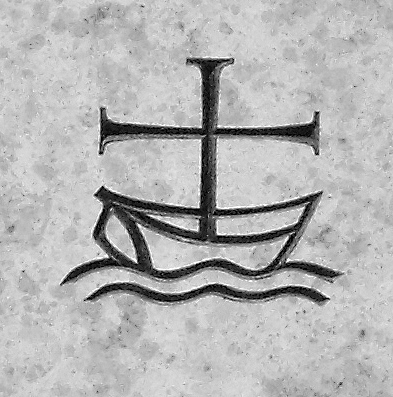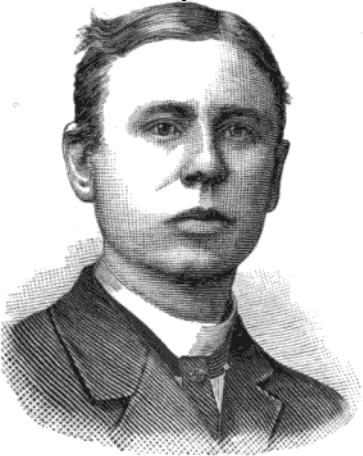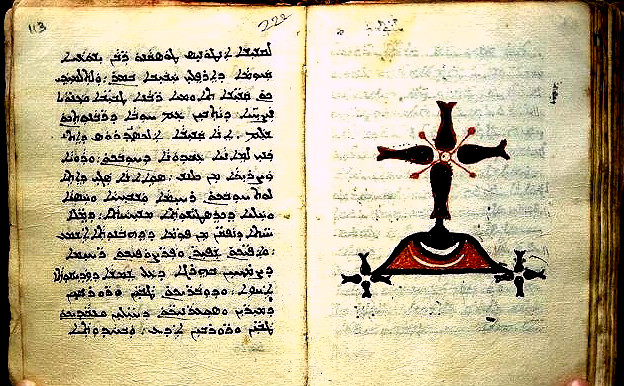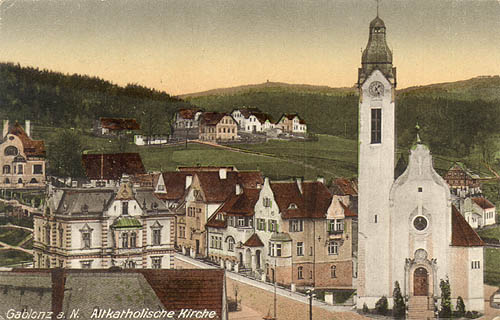|
Pulpit And Altar Fellowship
Altar and pulpit fellowship describes an ecumenical collaboration between two Christian organizations, and is a Lutheran term for full communion, or ''communio in sacris.'' ''Altar'' refers to the altar in Christian churches, which holds the sacrament of Holy Communion. ''Pulpit'' refers to the pulpit, from which a pastor preaches. ''Altar and pulpit fellowship'' is therefore a specific understanding of "doctrinal agreement and confessional unity" that "allows the pastors of one church to preach and celebrate Holy Communion in the church of another". Most European churches that arose during the Reformation are in altar and pulpit communion (full communion) through the Concord of Leuenberg, forming the Communion of Protestant Churches in Europe. The churches who signed the agreement are Lutheran, Reformed (including Presbyterian), Methodist, and United churches, and also the pre-reformation Waldensian, Czech Brethren, and Hussite church. All members also recognize the valid ... [...More Info...] [...Related Items...] OR: [Wikipedia] [Google] [Baidu] |
Ecumenism
Ecumenism (), also spelled oecumenism, is the concept and principle that Christians who belong to different Christian denominations should work together to develop closer relationships among their churches and promote Christian unity. The adjective ''ecumenical'' is thus applied to any initiative that encourages greater cooperation and union among Christian denominations and churches. The fact that all Christians belonging to mainstream Christian denominations profess faith in Jesus as Lord and Saviour over a believer's life, believe that the Bible is the infallible, inerrant and inspired word of God (John 1:1), and receive baptism according to the Trinitarian formula is seen as being a basis for ecumenism and its goal of Christian unity. Ecumenists cite John 17:20-23 as the biblical grounds of striving for church unity, in which Jesus prays that Christians "may all be one" in order "that the world may know" and believe the Gospel message. In 1920, the Ecumenical Patriarch ... [...More Info...] [...Related Items...] OR: [Wikipedia] [Google] [Baidu] |
Waldensians
The Waldensians (also known as Waldenses (), Vallenses, Valdesi or Vaudois) are adherents of a church tradition that began as an ascetic movement within Western Christianity before the Reformation. Originally known as the "Poor Men of Lyon" in the late twelfth century, the movement spread to the Cottian Alps in what are today France and Italy. The founding of the Waldensians is attributed to Peter Waldo, a wealthy merchant who gave away his property around 1173, preaching apostolic poverty as the way to perfection. Waldensian teachings came into conflict with the Catholic Church and by 1215 the Waldensians were declared heretical, not because they preached apostolic poverty (which the Franciscans also preached), but because they were not willing to recognize the prerogatives of local bishops over the content of their preaching, nor to recognize standards about who was fit to preach. Pope Innocent III offered the Waldensians the chance to return to the Church, and many did, tak ... [...More Info...] [...Related Items...] OR: [Wikipedia] [Google] [Baidu] |
Open Communion
Open communion is the practice of some Protestant Churches of allowing members and non-members to receive the Eucharist (also called Holy Communion or the Lord's Supper). Many but not all churches that practice open communion require that the person receiving communion be a baptized Christian, and other requirements may apply as well. In Methodism, open communion is referred to as the open table, meaning that all may approach the Communion table. Open communion is the opposite of closed communion, where the sacrament is reserved for members of the particular church or others with which it is in a relationship of full communion or fellowship, or has otherwise recognized for that purpose. Closed communion may refer to either a particular denomination or an individual congregation serving Communion only to its own members. Affirmation Generally, churches that offer open communion to other Christians do not require an explicit affirmation of Christianity from the communicant b ... [...More Info...] [...Related Items...] OR: [Wikipedia] [Google] [Baidu] |
Closed Communion
Closed communion is the practice of restricting the serving of the elements of Holy Communion (also called Eucharist, The Lord's Supper) to those who are members in good standing of a particular church, denomination, sect, or congregation. Though the meaning of the term varies slightly in different Christianity, Christian theological traditions, it generally means that a church or denomination limits participation (with respect to the Eucharist) either to members of their own church, members of their own denomination, or members of some specific class (e.g., baptized members of evangelical churches). This restriction is based on various parameters, one of which is baptism. See also intercommunion. A closed-communion church is one that excludes certain individuals (it specifically identifies) from receiving the Eucharist, communion. This standard varies from church to church. This is the known practice of most traditional churches that pre-date the Protestant Reformation. Other chu ... [...More Info...] [...Related Items...] OR: [Wikipedia] [Google] [Baidu] |
American Association Of Lutheran Churches
The American Association of Lutheran Churches (AALC, also known as The AALC) is an American Lutheran church body. It was formed on November 7, 1987, as a continuation of the American Lutheran Church denomination, the majority of which merged with the Lutheran Church in America and the Association of Evangelical Lutheran Churches to form the Evangelical Lutheran Church in America. The AALC offices were originally in Bloomington, Minnesota. The national office moved to Fort Wayne, Indiana, in 2007. As of 2008, it had 67 congregations, with about 16,000 members. In 2020, the denomination listed 59 congregations. Its current Presiding Pastor is the Rev. Dr. Cary G. Larson. Historical background The AALC began with 12 congregations and had, as of 2008, grown to 70 congregations spread across 23 states. The AALC sees itself as a confessional Lutheran church body in the United States. At its beginning, the AALC defined itself by what it saw as maintaining a commitment to the authority of ... [...More Info...] [...Related Items...] OR: [Wikipedia] [Google] [Baidu] |
Lutheran Church-Missouri Synod
Lutheranism is one of the largest branches of Protestantism, identifying primarily with the theology of Martin Luther, the 16th-century German monk and reformer whose efforts to reform the theology and practice of the Catholic Church launched the Protestant Reformation. The reaction of the government and church authorities to the international spread of his writings, beginning with the '' Ninety-five Theses'', divided Western Christianity. During the Reformation, Lutheranism became the state religion of numerous states of northern Europe, especially in northern Germany, Scandinavia and the then- Livonian Order. Lutheran clergy became civil servants and the Lutheran churches became part of the state. The split between the Lutherans and the Roman Catholics was made public and clear with the 1521 Edict of Worms: the edicts of the Diet condemned Luther and officially banned citizens of the Holy Roman Empire from defending or propagating his ideas, subjecting advocates of Lutheranis ... [...More Info...] [...Related Items...] OR: [Wikipedia] [Google] [Baidu] |
Philippine Independent Church
, native_name_lang = fil , icon = Logo of the Philippine Independent Church (Aglipayan Church).svg , icon_width = 80px , icon_alt = Coat of arms of the Philippine Independent Church , image = File:6222Barangays of San Felipe, Zambales 07.jpg , imagewidth = 250px , caption = The Iglesia Filipina Independiente Cathedral Church of San Roque in Zambales , abbreviation = IFI, PIC , type = Christianity (Western) , other_names = Aglipayan Church , main_classification = Catholic , orientation = Independent Catholic, Anglo-Catholic, Nationalist , scripture = Bible , theology = Catholic theology, Independent Catholic doctrine, Anglican doctrine , polity = Episcopal , governance = Synod , leader_title = Supreme Bishop , leader_name = Rhee Timbang , leader_title1 = Administration , leader_na ... [...More Info...] [...Related Items...] OR: [Wikipedia] [Google] [Baidu] |
Evangelical Lutheran Church Of Canada
The Evangelical Lutheran Church of Canada (ELCC) was a Lutheran Christian denomination active in Canada from 1966 to 1985. Prior to gaining autonomy, its congregations comprised the Canada District of the American Lutheran Church. The first presiding officer of the ELCC was Karl Holfeld.http://esask.uregina.ca/entry/evangelical_lutheran_church_in_canada.html On January 1, 1986, the ELCC merged with the Lutheran Church in America - Canada Section, to form the Evangelical Lutheran Church in Canada The Evangelical Lutheran Church in Canada (ELCIC; french: Église évangélique luthérienne au Canada) is Canada's largest Lutheran denomination, with 95,000 baptized members in 519 congregations, with the second largest, the Lutheran Church–C .... References Lutheranism in Canada {{Lutheran-stub ... [...More Info...] [...Related Items...] OR: [Wikipedia] [Google] [Baidu] |
Mar Thoma Syrian Church
The Malankara Mar Thoma Syrian Church, often shortened to Mar Thoma Church, and known also as the Reformed Syrian ChurchS. N. Sadasivan. A Social History of India'. APH Publishing; 2000. . p. 442. and the Mar Thoma Syrian Church of Malabar, is an autonomous Reformed Oriental church based in Kerala, India. While continuing many of the Syriac high church practices, the church is reformed in its theology and doctrines. It employs a reformed variant of the West Syriac Rite Divine Liturgy of Saint James, translated to Malayalam. The Mar Thoma Church sees itself as continuation of the Saint Thomas Christians, a community traditionally believed to have been founded in the first century by Thomas the Apostle, who is known as Mar Thoma (''Saint Thomas'') in Syriac,Mathew, K. S. (1993). ''The Faith and Practice of the Mar Thoma Church''. and describes itself as "Apostolic in origin, Universal in nature, Biblical in faith, Evangelical in principle, Ecumenical in outlook, Orient ... [...More Info...] [...Related Items...] OR: [Wikipedia] [Google] [Baidu] |
Old Catholic Church
The terms Old Catholic Church, Old Catholics, Old-Catholic churches or Old Catholic movement designate "any of the groups of Western Christians who believe themselves to maintain in complete loyalty the doctrine and traditions of the undivided church but who separated from the see of Rome after the First Vatican council of 1869–70". The expression Old Catholic has been used from the 1850s by communions separated from the Roman Catholic Church over certain doctrines, primarily concerned with papal authority and infallibility. Some of these groups, especially in the Netherlands, had already existed long before the term. These churches are not in full communion with the Holy See. Member churches of the Union of Utrecht of the Old Catholic Churches (UU) are in full communion with the Evangelical Lutheran Church of Sweden and the Anglican Communion; many members of the Union of Utrecht of the Old Catholic Churches hold membership in the World Council of Churches. The term "O ... [...More Info...] [...Related Items...] OR: [Wikipedia] [Google] [Baidu] |
Porvoo Communion
The Porvoo Communion is a communion of 15 predominantly northern European Anglican and Evangelical Lutheran churches, with a couple of far-southwestern European (in the Iberian Peninsula) church bodies of the same denomination. It was established in 1992 by a theological agreement entitled the ''Porvoo Common Statement'' which establishes full communion between and among these churches. The agreement was negotiated in the town of Järvenpää in Finland, but the communion's name comes from the nearby city of Porvoo, where a joint Eucharist (or Holy Communion) was celebrated in Porvoo Cathedral after the formal signing in Järvenpää. Overview The first seeds to the broader communion formed in 1992 were planted in 1922 when the Anglican Church and the Church of Sweden agreed to enter communion with each other. In 1938, the Archbishop of Canterbury, symbolic head of the Anglican Communion in London, invited the representatives of the Estonian Evangelical Lutheran Church and Lat ... [...More Info...] [...Related Items...] OR: [Wikipedia] [Google] [Baidu] |
Anglican Communion
The Anglican Communion is the third largest Christian communion after the Roman Catholic and Eastern Orthodox churches. Founded in 1867 in London, the communion has more than 85 million members within the Church of England and other autocephalous national and regional churches in full communion. The traditional origins of Anglican doctrine are summarised in the Thirty-nine Articles (1571). The Archbishop of Canterbury (, Justin Welby) in England acts as a focus of unity, recognised as ' ("first among equals"), but does not exercise authority in Anglican provinces outside of the Church of England. Most, but not all, member churches of the communion are the historic national or regional Anglican churches. The Anglican Communion was officially and formally organised and recognised as such at the Lambeth Conference in 1867 in London under the leadership of Charles Longley, Archbishop of Canterbury. The churches of the Anglican Communion consider themselves to be part of ... [...More Info...] [...Related Items...] OR: [Wikipedia] [Google] [Baidu] |



.jpg)



